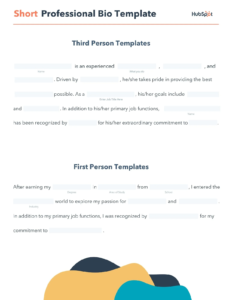What’s in this article:
- Always show caution when addressing personalized marketing topics
- Some examples to learn from
Creating personalized marketing content for your customers can be a double-edged sword. According to one study, 90% of customers find personalized creative either appealing or somewhat appealing, an overwhelming benefit that brands cannot ignore. On the other hand, other studies suggest that seeing personalized campaigns in action — such as referencing previous purchases — may come off as creepy.
The potential for personalized marketing is immense, but when campaigns go wrong, they tend to go outrageously wrong. So how can marketers avoid the most egregious mistakes? Instead of waving the problem away as “a marketing fail,” we must consider the precise errors that make customers feel uncomfortable or frustrated.
Be mindful of sensitive topics
Some industries touch on sensitive topics by their nature. You can’t run a funeral home without addressing death or promote a pharmacy that ignores serious illness. However, there is a right and wrong way to approach a new customer, as a Twitter user noted when her father in assisted living received a personalized gift basket from a mortuary.
Become the best CRMer you can:
CRM Hack: Monitoring the User’s Heartbeat
What Does It Mean to Treat a Customer’s Email With Respect?
To Lock or Not to Lock Customers (into CRM Journeys)
What the Efforts to Promote Responsible Gaming Look Like Form the Inside
Whatever your industry, any marketing content that aligns with difficult or sensitive topics needs an extra layer of editorial guidance. Approach ads that touch on health, mortality, or personal finances with care. After all, it’s incredibly likely that some customers may take issue with an insensitive portrayal.
Never breach customer trust
A customer who receives a personalized email from their favorite brand will almost certainly wish to open it. If they don’t recognize the brand, that response is far less likely. Even worse, if they realize the email comes from someone who bought their personal data, they may become concerned. And if they did not give explicit permission to share their data, they will become angry with everyone involved.
When a customer has a positive relationship with your brand, they trust you to care for their privacy and personal information. Once you breach that trust — even for a product you think they will like — it becomes much harder to retain them. On the other hand, if you are transparent about data policies and respect your customer’s needs, they will be far more open to personalized communications.
In some cases, a middle ground may be possible. For example, consider using your marketing channels — such as email or social media — to recommend promotions from affiliates instead of handing over customer data. When customers trust you, they are more likely to trust content from your channels than unfamiliar brands. This helps build long-lasting and loyal customer relationships, which in turn contributes to the overall growth of brands and companies.
Pay attention to audience context
How we interpret branded messaging tends to change over time, our tolerance for sexist ads from the 1920s being a prime example. Content for diverse audiences can have the same effect — what may work for one group may be a serious misstep for another, regardless of whatever similarities they share.
Consider Adidas. As a sports apparel company, it makes sense that the brand would reach out to marathon runners in a personalized campaign. Unfortunately, a 2017 email reading, “Congrats, you just survived the Boston Marathon,” did not have a positive impact after the 2013 terrorist attack. Adidas could have avoided this incident if it knew the context for its “survived” idiom didn’t apply in this scenario.
Marketers live in a diverse, highly complex world, which means personalized campaigns can always lead to marketing fails. If nothing else, we can minimize risk with one simple rule: Always apply foresight and editorial guidance to ad content before hitting the send button.
The post How to Avoid a Personalized “Marketing Fail” appeared first on Post Funnel.




